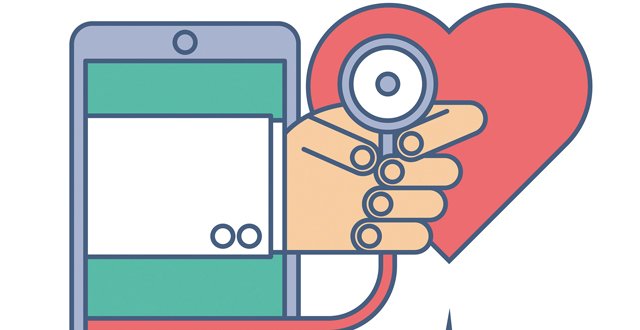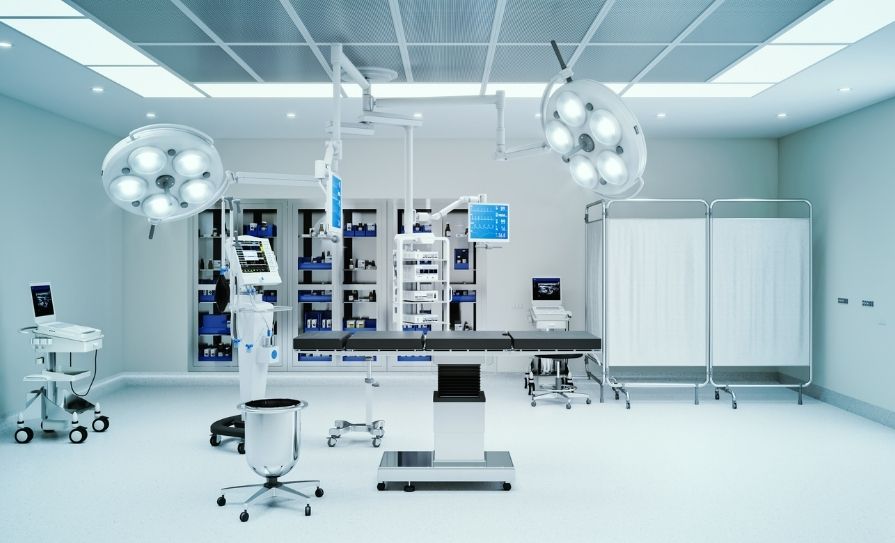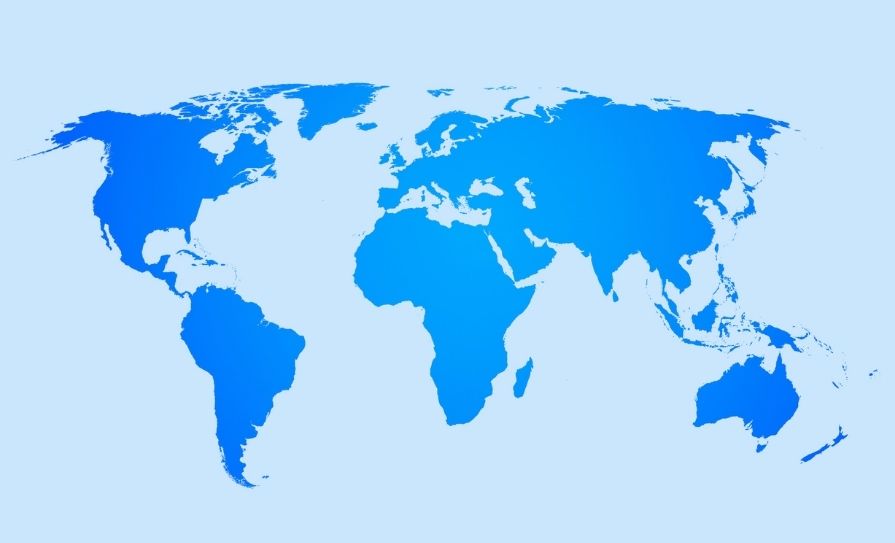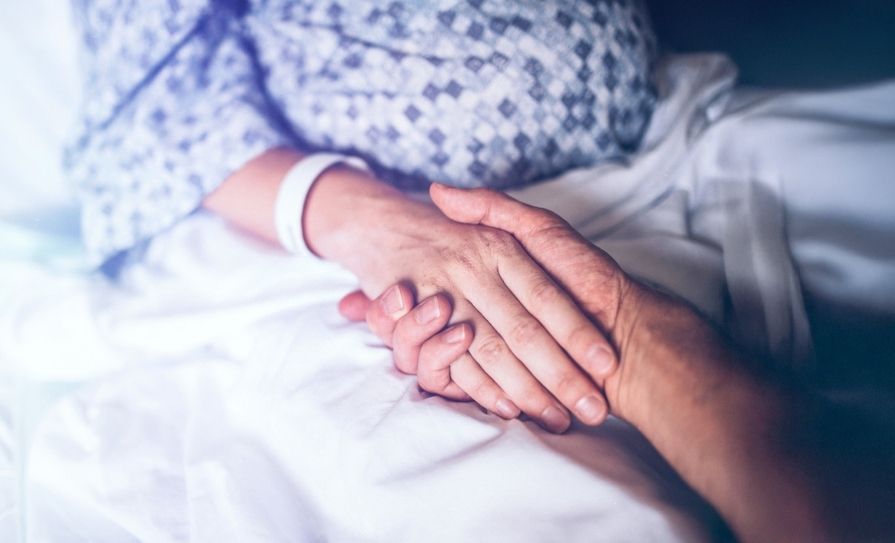With remote consultation becoming the new normal due to the Covid-19 crisis, Paul Mulholland and Niamh Cahill ask how well prepared the Irish health service and medical professionals are for this change in practice, which could have far-reaching implications for the future of doctor-patient interactions
In 2012, an EU taskforce was convened to explore the potential of information and communications technology (ICT) in health innovation in the EU.
The taskforce was asked to make recommendations on what could be done to ensure Europe reaps the full benefits of e-health, including telemedicine, by 2020. The report focused on how to achieve more affordable, less-intrusive and “more personalised” care. It formed the basis of Ireland’s e-health strategy, which was published in 2013.
These reports could not have predicted that 2020 would see the need for telemedicine services explode due to the Covid-19 pandemic. With patients at risk of being infected by the virus in traditional healthcare settings, such as hospitals and GP practices, the benefits of remote consultation have never been more apparent. But how well-braced is the Irish healthcare system for this change in practice? Telephone is the most straightforward method of remote consultations, but more sophisticated video technology is often required for more in-depth assessments.
According to Consultant Cardiologist in the Blackrock Clinic Dr Paddy Barrett, the technological systems are in place, if the will is there to utilise them in an integrated manner.
“They are just not integrated in an appropriate fashion,” said Dr Barrett, who has a keen interest in digital healthcare.
“We have seen how, almost overnight, clinicians rolled-out a telemedicine service using off-the-shelf solutions. The long-term solution will require having these platforms integrated into existing digital healthcare infrastructure,” Dr Barrett told the Medical Independent (MI).
Dr Barrett said the key with telemedicine is in understanding it is not suitable for all consultations. However, if carefully chosen, it can be effectively used in a substantial number of clinical scenarios that would have previously involved the patient traveling significant distances.
“It’s all about patient selection and understanding the limitations of what it can do right now — and we are learning it can do a lot,” Dr Barrett said.
“People will say the biggest users of healthcare, the elderly, will be unable to use such services. I firmly disagree. Just look at any older person navigate an iPad after some brief instruction. The evidence does not bear this out when you look at home-based tele-rehab solutions, for example. They do spectacularly well. Elderly populations may need a little more assistance at the outset but once they have the basic concepts down, they do exceptionally well.”
He pointed out that over the last week alone, he used telemedicine services to see patients in their 80s and also patients who would typically have to travel three hours for an appointment.
“Both groups have thoroughly enjoyed using the service, as have I,” he said.
“Telemedicine is not a 100 per cent substitution for all clinical scenarios but we have opened Pandora’s box and when this is all over [the Covid-19 pandemic], more and more patients are going to ask for the telemedicine option when appropriate. The question we will have to ask ourselves is not whether our patients are ready, it’s whether we are.”
International societies such as the European Society of Cardiology (ESC) have published guidance on remote consultation. Chair of the ESC’s digital health committee, Prof Martin R Cowie, has said simple remote approaches such as telephone consultation are already key to many chronic disease management programmes, but the necessary restriction of movement with Covid-19 will accelerate the transition away from face-to-face contact to more remote video consultation.
“After the pandemic is under control, it is unlikely we will move back to where we were,” he stated.
In the previous issue of the MI, the President of the Irish Society for Rheumatology, Prof Geraldine McCarthy, said that rheumatologists have been continuing consultations through remote means as a result of the pandemic.
Like Dr Barrett and Prof Cowie, she said remote consultations may become more embedded in Irish clinical practice as a result of the current crisis.
Dr Ronan Kavanagh is a Consultant Rheumatologist in the Galway Clinic and has been performing remote consultations for the past number of weeks. Dr Kavanagh uses the doxy.me video service, and Zoom as back-up. He has found patients, including those in an older age group, comfortable with the new arrangements.
“I automatically assumed anyone over 70 wouldn’t be willing to do this and I do think some older patients are much more comfortable on the phone,” he told MI.
“Though I did conduct a couple of consultations today with people in their 70s, and if they have a smartphone, with the technology we’re using, there’s no software download, you can text or email them the link, they click on it, it opens a web browser, then they’re in your ‘waiting room’, and it’s as simple as that. I can take photographs of clinical signs, I can share my desktop and show them images, I can send them documents over this solution, so it has come a long way.”
Dr Kavanagh said a traditional telephone call is a “very, very, useful alternative” but “obviously you’re missing a lot of the information you’d like in terms of making a proper assessment of patients”.
Surgery
The National Clinical Programme in Surgery published guidelines on 9 March 2020 on telemedicine for postoperative patients as a result of Covid-19.
“Although curtailing outpatient visits may be prudent in many of these circumstances, for patients who are recovering from surgery, a postoperative check-up is an important safety measure, allowing complications and other postoperative problems to be identified in a timely fashion,” according to the programme.
The programme stated there is evidence that virtual outpatient (VOPD) assessment, especially as a follow-up tool, is safe, cost-effective and acceptable to patients.
“A consistent and safe standard of care is reported when carefully-selected surgical patients are included, with oversight of the protocols, standards and documentation by a senior surgeon,” according to the programme.
“… While good evidence indicates that a virtual service is highly acceptable to patients, less evidence is available supporting the reliability of this practice in identifying adverse postoperative events, so caution is advised,” outlined the document.
“Standard face-to-face follow-up consultation may be preferable for some patients and should remain available when indicated by patient preference or clinical need.”
Medical Council
The Medical Council’s Guide to Professional Conduct and Ethics for Registered Medical Professionals contains a section on telemedicine. It states that doctors must satisfy themselves that the services they provide through telemedicine are safe and suitable for patients.
MI asked the Council whether, given the greater need now for these services, any further guidance on telemedicine will be provided.
A spokesperson replied that guidance for doctors from the Council is constantly under review, with updated information for doctors, including ethical guidance, available on the Council’s Covid-19 webpage.
“In these unprecedented times, advice is changing as complexities emerge,” the spokesperson stated.
“Doctors are reminded to use their clinical judgement and refer to professional guidelines, seek support and adhere to existing ethical guidance in respect of telemedicine. Guidance and supports are available for doctors from the Medical Council, their postgraduate training body, HSE and Department of Health.”
HSE
The HSE is working on a number of telemedicine solutions to enable clinicians to undertake remote consults with patients.
As part of this way of working, guides are being developed to assist clinicians in delivering services using technology, a HSE spokesperson told this newspaper.
“Engagement has taken place with the Office of the Data Protection Commissioner in respect of the use of these types of interventions,” according to the spokesperson.
It is understood that the preferred video conferencing system being examined by the HSE has issues from a security point of view, which need to be resolved.
Consultant in Old Age Psychiatry, North Dublin, Dr Matthew Sadlier told this newspaper that a primary concern with any new system is protecting patient confidentiality.
“Hopefully, if the HSE can source or use a reliable self-created solution by their own programmers or a purchased software package that allows teleconferencing or teleinterviewing patients, I think telemedicine is going to be the way of the future.”
Dr Sadlier pointed out remote consultation now has a legislative basis in terms of mental healthcare. As a result of the Covid-19 crisis, the Mental Health Commission is conducting mental health tribunals remotely. Temporary emergency legislation has been introduced to allow this change in practice to happen. The independent consultant psychiatrist can carry out the examination of the patient remotely, according to the new Act.
The widespread use of such systems could in the long run have a significant impact on the working lives of medical professionals, according to Dr Sadlier.
“When we come back to normal life, there is the potential for doctors employed by the public service to do a certain amount of work from home. If we develop these teleconferencing apps and if we develop better IT infrastructure where patient notes can be electronically stored in a confidential way, then could doctors do more work from home, would that allow more flexible work practices and would that allow people to amalgamate childcare and work?”
Speaking generally, Dr Sadlier said the current crisis highlights the need for the widespread use of electronic healthcare records (EHRs) within the acute sector, which would make accessing patient information much easier.
“What this Covid crisis has shown more than anything else is that our IT structure and our information structures are not suitable for the 21st Century,” he said.
General practice ahead of the curve
Dr Sadlier pointed out that most GPs already use EHRs. Many telemedicine solutions have been used in general practice, and the current crisis has fast-tracked this process.
“I think this has forced general practice into the 21st Century with a bang,” Dr Maitiú Ó Tuathail said on the dramatic increase in telemedicine in response to the global pandemic.
Since the outbreak of Covid-19 in Ireland, GPs have significantly altered how they work in order to maintain patient services and minimise the risk to staff and others of contracting the virus.
Zoom, Skype, WhatsApp, Doxy.me and NuaHealth are just some of the solutions being used by GPs, as well as telephone, as they adapt to treating patients down the phone line or via video screen.
Before the pandemic, many GPs were sceptical about the safety and benefit of telemedicine in primary care.
But almost overnight, this way of thinking has changed. Anecdotal reports are emerging of GPs formerly opposed to telemedicine now advocating for its use in light of the global emergency.
The Irish Platform for Patient Organisations, Science and Industry (IPPOSI) has raised awareness of the benefits of telemedicine for patients since its inception.
Investment and a culture change, key components in introducing telemedicine, which have been challenging to secure up to now, have suddenly occurred “in the midst of this terrible crisis”, a spokesperson for IPPOSI told this newspaper.
After the crisis is over, the organisation would like to see patients involved in the future review and design of telemedicine.
Dublin GP Dr Ray Walley is a member of the national Covid-19 GP liaison committee, which meets via teleconference twice daily to discuss matters with officials from the Department of Health and the HSE.
The HSE is currently examining several e-health solutions for general practice, with some of these solutions now with the ICGP general practice information technology (GPIT) group for assessment, according to Dr Walley.
In the past, concerns around such solutions centred on continuity of care and patient safety, issues raised by the IMO.
But as long as GPs have a full patient history and the patient is known to the GP, Dr Walley believes patient safety can be maintained.
New e-health consultations will augment GP services, and because they now allow continuity of care, can only be seen as positive, said Dr Walley.
He cautioned, however, that telephone and video consultations “cannot replace face-to-face consultations”, which, because of their very nature, enable GPs to opportunistically detect a multitude of patient issues relating to frailty, cognition, mobility and communication, for instance.
Telemedicine, therefore, will augment GP services but never replace face-to-face consultations, he said.
Mr Richard Corbridge, former Chief Information Officer at the HSE, told MI that in 2017, the Irish health technology community was leading the way with virtual GP capabilities.
“WebDoctor.ie was up there with Babylon starting the market place for solutions in virtual primary care when others were still considering how to make this work.”
Building trust, however, proved challenging, and many GPs were resistant to new entrants into the market place.
“Despite support from the HSE for the technology approach, security and governance, the team just weren’t able to get the foothold they deserved. Fast-forward to 2019, and the healthcare systems of the world were starting to wake up to the fact that digital and video-based consultations were the only answer to the capacity issue.”
The future
In light of the current crisis, telemedicine is now the “new normal” for many healthcare professionals, according to Mr Corbridge.
“To separate the role of telemedicine is no longer possible. Telemedicine is how primary contact should be made; it is now how consultations that require shared resources should be done; it is how MDTs [multidisciplinary teams] should be run. Telemedicine is now the new normal. With the new ‘normal’ though, come new ways of working and new ways of communicating; herein will lie the challenge.”
As the HSE works to introduce new telemedicine approaches in hospitals and primary care in response to the pandemic, change will happen more quickly than could ever have been imagined, Mr Corbridge said.
“In the next 10 weeks changes will be approved that will have an impact for the next 10 years. In the next 10 months, we will see a digital change that in the past would have taken any country 10 years to achieve. To do that without error will require ring-fenced resources that can have both eyes on the future and the impact of change on the set-up for the future.”
He added: “The ability to progress telemedicine, like all healthcare change, is more to do with business change and people than it is with technology.”
According to Dr Ó Tuathail, at his practice over 90 per cent of patients are now seen via telephone or video consultation using the HSE NuaHealth app from Nua Solutions.
“There were some glitches at the start but it’s working well now. It provides good-quality video consultations. I’ve found it very useful for assessment of rashes and mental health consultations but also general consults, as you can get a lot of clinical information from it, such as if someone looks well or unwell, their respiratory rate, etc.
“It doesn’t and won’t replace a face-to-face consultation, but in these challenging times, it’s been an incredibly useful asset.”
The move to video and telephone consultations has been widely accepted by patients, according to Dr Ó Tuathail. E-scripts, where prescriptions are emailed to pharmacies, are also widely in use now due to the pandemic.
In an effort to reduce risk and support self-isolation and cocooning, a broad and rapid shift to telephone and telehealth has occurred at Dr Austin Byrne’s practice in Tramore.
“I can certainly see the use of e-health solutions becoming more pervasive and really welcome this. E-prescribing is something that is quite obviously suited to digital change and will provide safety benefits and massive cost savings to the health service. I think as we become more familiar with telehealth solutions, we’ll start to embrace them.”
Despite the obvious advantages, however, he warned that “there are components of healthcare commoditisation” at play in the market.
“We’ve seen in the UK, for example, major players bid to take over entire domains of healthcare provision via e-solutions, with disastrous consequences for both patient outcomes and cost.”
Many GPs are now exploring the integration of video in GP practice management software systems.
Dr Noel Howard, a GP based in Galway, told MI his practice had recently signed-up for a trial following expressions of interest from Socrates and Clanwilliam, which are examining introducing video in their software.
There are also reports that out-of-hours GP co-op Southdoc is exploring integrated video consultations within its software.
Overall, greater use of telemedicine in general practice will take place when the pandemic ends, many GPs believe. Triage of patients when they ring to make an appointment and e-scripts may also become the norm.
Indeed, the HSE had aimed this year to introduce a nationwide e-prescribing system to increase patient safety and reduce cost.
According to Cork GP Dr Jim Harty, the doxy.me service has proved useful for certain consultations in daytime surgery, where he knows the patient.
In East Cork, Dr Mike Thompson has successfully adopted an email screening tool to assist with patient consultations. He is also using video for some consultations.
Yet nothing will ever replace human contact with patients, he maintained.
“Personally, nothing can replace physical presence in a consultation, the pauses, the nuances, the gear change in body language, not to mention the ability to examine properly.”
According to Dr Ó Tuathail, general practice will have modernised “for the better” when the pandemic is over.
“We have shown ourselves to be able to adapt to whatever challenge we face, and I think the public has gained a greater understanding of both what we do as GPs and the importance of general practice as a result of this pandemic. We have been to the fore in terms of the response to the current crisis and GPs have shown true leadership. I hope this isn’t forgotten by those in charge when this is all over.”













Leave a Reply
You must be logged in to post a comment.